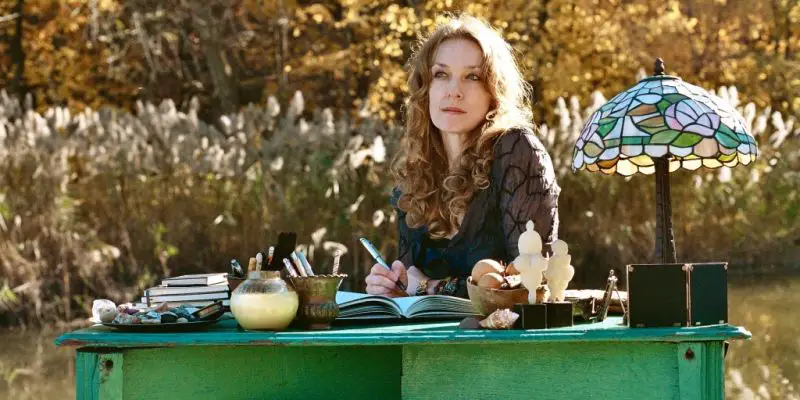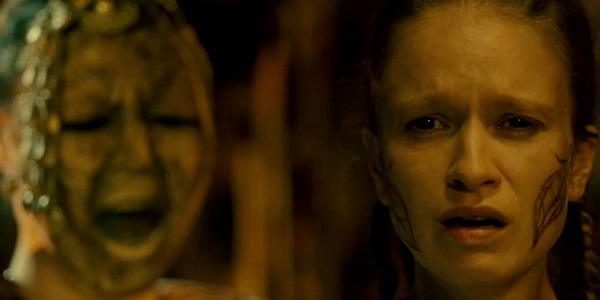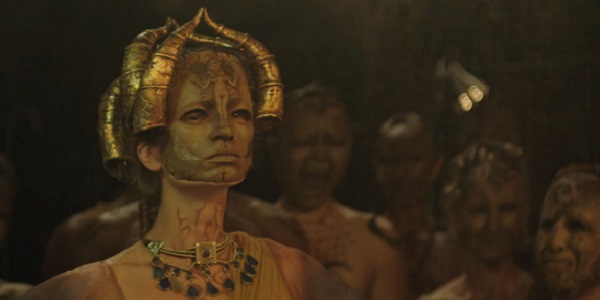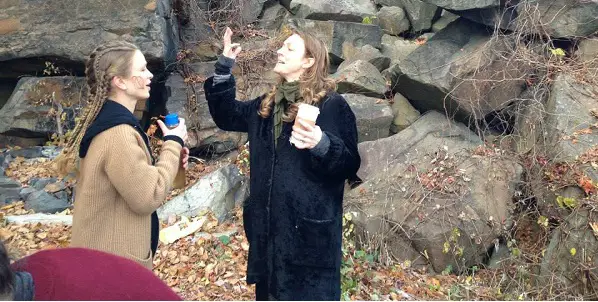A Conversation With Director Deborah Kampmeier: “Women Must Be Heard”

Jax is a filmmaker and producer, and a film &…
I recently had the pleasure of sitting down (via Skype) with director Deborah Kampmeier after a special preview screening of her newest film, SPLit. The film is premiering at the Sarasota Film Festival this year, so if you can go see it, get yourself down. Until you get the chance, check the trailer out here.
If critics wanted Kampmeier to hold back after Hounddog, she’s certainly not taking their advice. If anything, SPLit is the most gritty and in-your-face of Kampmeier’s films to date, whilst remaining delicately crafted and carefully paced. Personally, I found it to have the most resonance of her three features.
The film deals with difficult themes of abuse, sexuality, pain, and grief and Kampmeier endeavours (successfully) to give voice to the every woman and her story. The film features excellent performances by all but Amy Ferguson, Morgan Spector, and Raïna von Waldenburg deserve special mention. It was an absolute enjoyment to get to discuss the film with her.
Jacqui Griffin for Film Inquiry: Let’s start with the really great bit of dialogue: “I don’t want my daughter to grow up pure, I want her to grow up whole.”
Deborah Kampmeier: It’s really interesting because that’s the line, so far, that everyone keeps pointing out. I think it resonates with people because there is a deep need, as women, to be nurtured and supported to express our entire self, our whole self, not just the acceptable self. And I think that the acceptable self is what’s forced down our throats from day one, as women.
I believe this idea of purity, which is very prevalent right now in certain parts of our society, is about control. It’s about controlling girls and women and it robs them of their whole self. We live in a paradigm that represses, exploits, commercializes, shames and abuses girls’ sexuality instead of nurturing and nourishing it. We keep our daughters naïve instead of educating them about their sexuality. And then they are set up for all sorts of experiences that diminish their power and their autonomy. I feel very strongly that sexuality is integral to our creativity, to our life force, and when we are separated from our sexuality as women and girls, there’s this huge chunk of our soul that’s been stolen from us.

So, no I don’t want my daughter to grow up “pure” and cut off from her sexuality. I want her to grow up with it integrated and belonging to her. So that she can make choices about her sexuality rather than other people imposing their choice on her. For me, so much of what SPLit is about is moving past the acceptable self into the authentic self. Which means we have to face and integrate our dark side, we have to face and integrate our rage and our sexuality.
FI: Did a desire to convey this message go into the pivotal scene with the women telling their stories and did it influence your (extremely brave) decision to portray genital mutilation on screen?
Deborah Kampmeier: Well, I wanted in that scene to show many aspects of the ways in which the patriarchy has damaged women and their sexuality. And I think that’s certainly an extreme expression of trying to control a woman’s sexuality, trying to keep a woman “pure,” and how damaging that is. You know, all the stories spoken were stories that I had some kind of relationship to.
That particular character was based on a woman that lived with my family. It was important to me to give voice to her story. It was important to me to give voice to as many stories as I could. There are women in that circle who actually are speaking their own story. I won’t reveal who they are, but I wanted to give a space for these women to voice the ways in which the patriarchy has harmed them.
Originally, every woman in that circle spoke. We filmed every woman speaking. Sadly, I couldn’t keep every story in there, so I zeroed in on the stories that were primarily around sexual abuse. There were other stories in there as well. Hopefully on the DVD extras or something we’ll do a section called “I Speak” where all these women actually get to articulate the ways in which the patriarchal culture we live in was so damaging.
FI: Can you tell us a little about the character of Iris?
Deborah Kampmeier: Iris is primarily seen in the theater piece, playing the role of Ereshkigal. In the myth that I’m basing this theatre piece on, “The Descent of Inanna,” Ereshkigal is the grieving and raging sister in the underworld. In my interpretation of it, Ereshkigal is actually holding every woman’s rage, that’s how big it is. Every woman throughout history’s rage.
All of this rage, this ancient rage that we as women have, living in our bodies, stored in our DNA. Rage that we have silenced in ourselves, to be nice, to not be inappropriate in our expression of our femininity. It is ancient rage, I really believe that. And she’s also holding all the rage of every woman who speaks their truth in that circle. She’s grieving for all those women. She is also an individual woman in a relationship with the theatre director, and we see a flash of her in the “real” world, but primarily she serves as an archetypal figure in the psyche of Inanna calling her to face herself, to face her own rage.
FI: The masks seemed very important. Who made them for you and why did you decide to use them?
Deborah Kampmeier: I wrote the masks into the script from the beginning and I found a brilliant production designer, Eloise Kazan, who’s just a genius. She works out of Mexico and the Czech Republic and she’s got a huge theatre career. I found her when I was researching the “Descent of Inanna” myth and trying to see what other projects had been done. And she actually designed a project in Mexico at the National Theatre on the same myth. Very different than the way I used it, but I saw her work and was just so taken by it.
So she and I communicated for quite a bit of time and we exchanged beautiful research photos. There’s an image late in the script that we finally chose to create the masks from. We actually weren’t able to shoot the scene in the end, just logistically budget-wise. But it was of all these women emerging out of the earth. The way it was written, you just see a muddy field and then these women are emerging up out of the earth. And we drew from that image. We wanted the masks to feel very organic, very feminine, very much that earthy energy. It really came from that image.

The three actresses at the end who the masks are taken off of are very close friends of mine, Hye Yun Park, Mikaela Martin and Mimi Jefferson. And they came into the studio and we made the molds for the masks from their faces. I wanted rage, grief, and pain. And so each actress took on one of those expressions. We did some theater movement exercises we’ve done together before and found the face for each actress. And then they each held that face. For a long time! It was quite amazing when the plaster was put on their faces, they were deep in the emotion of each mask.
And finally, when the masks were dried and taken off, they were weeping under that plaster. It was just incredible what these three women dove into in order to mould these masks. And these three masks were the base for every other mask created. It was fascinating how, as masks will do in theatre, they transformed with each actress who put them on. So even though they started as three individual masks, within particular emotional realms, they transformed into endless expressions in the chorus of women.
So in the film these women are trapped in the underworld in their masks, in their grief and pain and rage. And they can only be released from the grip of these stuck feelings through empathy. They must be heard. That is all. They must be heard. When Inanna goes to the underworld, she has to hear; she’s so resistant to hearing the rage and the grief and the pain – but ultimately she has to hear. The way that we free ourselves is to hear it. The way we free ourselves is to speak it, to express it, and to hear it. So when it’s finally heard, all of this pain, all of this grief, all of this rage, the masks come off. And the release occurs where those feelings can soften, can move, can transform.
It is this process of healing that the film is really about. Of healing the split. Of re-integrating, re-integrating, re-integrating ourselves, so we don’t get stuck.
FI: Inanna’s femininity in the beginning is very close to being the male stereotype of what a woman should be. What was her journey?
Deborah Kampmeier: I think she’s split at the beginning of the film. She’s acting out her idea of sexuality. She’s acting out her idea of femininity. The strip club is her acting out her sexuality rather than being connected to authentic sexuality. And it’s about presentation. And I do think there’s a way, whether it’s as a stripper or just bringing dinner to the table to our lover, there’s so many ways in which we can act out our sexuality, act out some idea that society has presented to us.
In the process of acting out, we disconnect from something authentic. Then because we’re disconnected from something authentic, we act out more, and the more we act out the further away we are from an authentic connection to our own sexuality. So that was really part of her journey, to heal that split. To heal from acting out the male fantasy of sexuality to embrace her true sexuality.
FI: There’s this great repeated line in the film, “mirror her”. The actress playing Iris starts doing these sexual movements but they aren’t sexualised. She’s being sexual and taking control of it and that seems to be what Inanna struggles with. I really liked the repetition of “mirror her” but is that an instruction to the viewer?
Deborah Kampmeier: “Mirror her” is from a workshop I did about 25 or 30 years ago that was based on this myth. Part of what the creature in the myth that goes to the underworld to save Inanna is told is that you have to hear Ereshkigal’s pain and you have to feel her pain, and if you don’t really feel it and you don’t really hear it then you’re going to be killed. I think that’s really the message, we have to hear these stories, we have to feel them. We can’t just sit outside. Inanna can’t sit up there on her high and mighty throne, detached. We as women have got to, for real, hear each other.
So in this workshop we were pushed to mirror the body and the sound of the woman in front of us, and through mirroring her, actually embody her experience. When you mirror that woman’s pain you can really feel it, you can know it, by really feeling it. But by mirroring it exactly. Not imposing your idea on it, not imposing your story on it, but to really, truly hear. If you mirror that person you’re really going to hear them. You’re going to experience their story if you’re allowing yourself to move into it physically and vocally and emotionally.
That’s what I experienced in this workshop. And that’s what I’ve experienced in the theatre as well. Over and over I’ve experienced it in the theatre. The theatre is where I grew up as an artist and where I learned who I was. So the theatre piece is very personal to me. What happens in those rehearsals in the film are things I’ve experienced in rehearsals in the theatre or in my acting class. And they are powerful experiences.
FI: It sounds like it’d be good advice for some of the men in the country to actually hear and actually feel what women are going through.
Deborah Kampmeier: We don’t want to be fixed, we just want to be heard.
FI: Do you feel at all that a change is coming?
Deborah Kampmeier: Yeah. I’m afraid it won’t come as quickly as it should, but I think women are speaking. You know, the stories are being told. Whether they’re being heard yet or not is still in question, but they’re being told. And speaking truth, that’s it. That’s what changes. It takes a lot of courage.
All those women in that circle were amazingly courageous, just insanely courageous. Women are courageous and we speak our truth over and over and things are changing. I do feel there’s hope. I feel we’re at a tipping point. It’s being talked about. It’s finally really being shouted out loud. And people can’t pretend it’s not anymore.
FI: You’ve said in a previous interview that you consider Hounddog, Virgin, and SPLit to be a trilogy.
Deborah Kampmeier: Yeah, retrospectively. I feel that Hounddog was a 12-year-old, Virgin was a 17-year-old and SPLit is a 24-year-old and I do feel that it’s a progression of my psyche as an artist.
FI: Will the story continue?
Deborah Kampmeier: I think it’s done now. [laughs] I hope that, you know, maybe we’ll have three more in twenty years or something. I mean, certainly I was exploring very similar terrain in all three films – different plots, but I’m wrestling with the same issues in these three films. And I feel like, for now anyway, I’m done wrestling.

FI: You’ve talked before about the difficulties you had making Hounddog, did you any difficulties making this film? Was it more straightforward?
Deborah Kampmeier: No, it wasn’t more straightforward. It’s not been easy to get any film made. I’ve raised the money for all my films from individuals and I’ve turned over every stone in the process. It was announced I was making SPLit at Sundance when I was there with Hounddog in 2007, and it took me that long, another 7 or 8 years, to get the film made.
It’s very hard to get my films financed. I’m not willing to make them nice, I guess. And I think this film, SPLit, is less linear. It’s less accessible perhaps.
FI: How do you think this is going to be received?
Deborah Kampmeier: You know I was so shocked by the controversy around Hounddog. I had no idea. It just took me totally by surprise. So this time I’m prepared for controversy. I’m prepared for it to split audiences. It has done so already. I feel people either love it or hate it. And that’s cool.
FI: We recently published an interview with Cady McClain about what it’s like to be a female director in the film industry. But do you even consider yourself part of “the industry”?
Deborah Kampmeier: No [laughs]. I would like to, but I guess not. It’s not for lack of trying, but at a certain point, if your story that you need to tell is not commercial, then it’s not commercial. I always think my films are going to cross over and it’s going to be wildly embraced on a commercial level. I’m surprised every time when they aren’t.
[laughs]People say “I’ve never seen anything like SPLit before” and I think really? I live with these stories every day.
FI: A final question, something I’m really curious about. Are your films received differently outside of America?
Deborah Kampmeier: Interestingly, I have not really made my way out of America. You know, I’m trying a different tactic this time around.
In the past, the critics in the past have stopped them [the films] so completely that they’ve not been able to recover and make their way anywhere else. But now it’s different with the internet. I think there’s much more opportunity to get further out to the world.
Deborah Kampmeier’s ruminations on her upcoming film, career, and the state of womanhood left me feeling that she’s a breed of artist who will be revisited and respected with the passing of time and changing attitudes about what can and can’t be said.
I personally never understood the harsh criticisms of her previous work, finding her storytelling both subtle and profound, with a strong sense of visual style. I’m afraid I have to agree with her assessment that her latest effort will divide audiences, because too many are still drawn to strictly linear and readily accessible stories.
But for those of us (man or woman) who’ve been through trauma and needed to find a voice for the rage and pain and grief, and who know that the path to finding that voice isn’t linear or in any way readily accessible, I think the film speaks volumes to us.
Once again, in case you missed it, here’s a link to the teaser for the film and keep an eye out for it!
Does content like this matter to you?
Become a Member and support film journalism. Unlock access to all of Film Inquiry`s great articles. Join a community of like-minded readers who are passionate about cinema - get access to our private members Network, give back to independent filmmakers, and more.
Jax is a filmmaker and producer, and a film & tv production lecturer at the University of Bradford and is also completing a PhD about Stan Brakhage at the University of East Anglia. In the remaining "spare time", Jax organises the Drunken Film Fest, binges bad TV, and dreams of getting “Bake Off good” with their baking.













